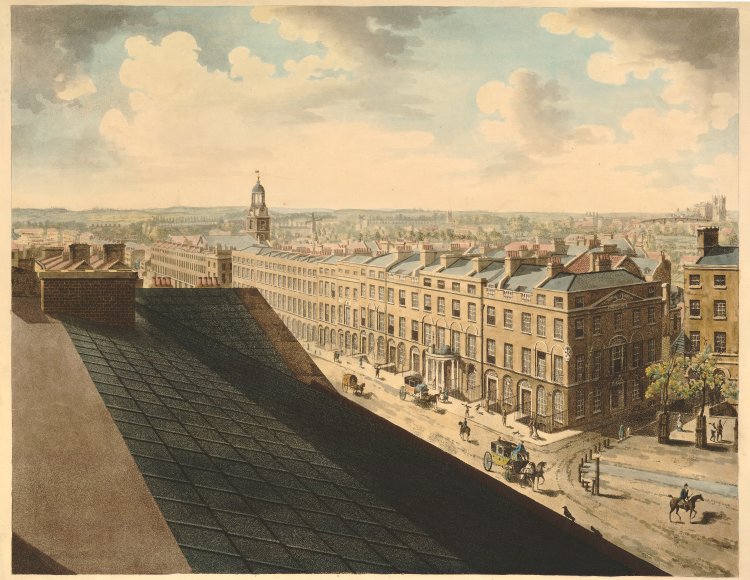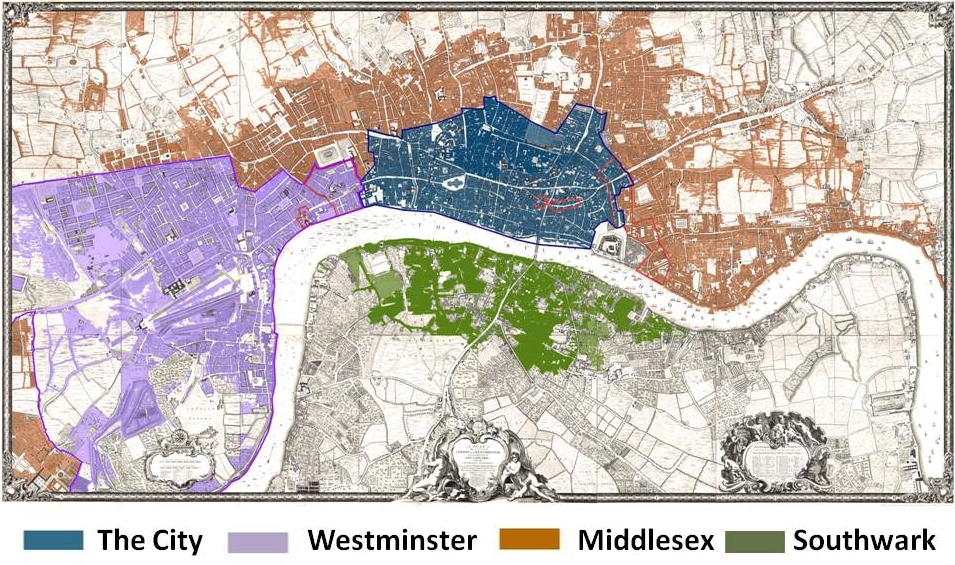Southwark
 Henry Aston Barker. Barker's Panorama of London (one of six plates). 1792. British Museum, British Masters Portfolio. © Trustees of the British Museum.
Henry Aston Barker. Barker's Panorama of London (one of six plates). 1792. British Museum, British Masters Portfolio. © Trustees of the British Museum.
Introduction
South of the Thames London grew much more slowly than in the rest of the metropolis. Initially developed at the southern end of London Bridge, Southwark could not grow quickly owing to the lack of additional bridges across the river and the relatively marshy ground. With the opening of Westminster Bridge in 1750 and Blackfriars Bridge in 1769 the pace of development accelerated. Yet even by 1800 the population of Southwark, at around 66,000, was only about 7 per cent of the metropolis as a whole. The inhabitants were largely craftsmen and shopkeepers, with the major businesses being innkeeping, brewing, and the riverside trades. Several prisons were located here, including King's Bench prison and the Marshalsea debtors' prison. Because Southwark was for the most part governed by different institutions from the rest of the metropolis, its inhabitants are largely excluded from the records included in London Lives. The most significant exception is St Thomas's Hospital, which was located on the southern bank of the Thames and took in patients from both sides of the river.
Government
 The City of London is indicated in dark blue, Westminster in purple, Middlesex in brown, and Southwark in green. The base map is John Rocque's, London, Westminster and Southwark, 1746. © Motco 2001 (base map only).
The City of London is indicated in dark blue, Westminster in purple, Middlesex in brown, and Southwark in green. The base map is John Rocque's, London, Westminster and Southwark, 1746. © Motco 2001 (base map only).
The area around the initial settlement of Southwark at the base of London Bridge was actually a ward of the City of London, Bridge Ward Without. Together with its surroundings, however, it also fell under the jurisdiction of the Surrey Justices of the Peace and their quarter sessions.
Criminal Justice
Once a year a separate borough sessions was conducted by the Lord Mayor and aldermen of the City for Bridge Ward Without, where minor crimes including assault and petty larceny were tried. When the City's Recorder was present, trials for capital offences could also take place. The records of this court are available at the London Metropolitan Archives. In practice, however, the vast majority of criminal prosecutions arising from Southwark were tried at the Surrey quarter sessions or the assizes courts, which often met at Kingston. These have been studied comprehensively by John Beattie.
Exemplary Lives
Lives using the keyword Kingston:
Lives using the keyword Southwark:
Lives using the keyword Surrey:
Introductory Reading
- Beattie, J. M. Crime and the Courts in England 1660-1800. Princeton, 1986.
For further reading on this subject see the London Lives Bibliography